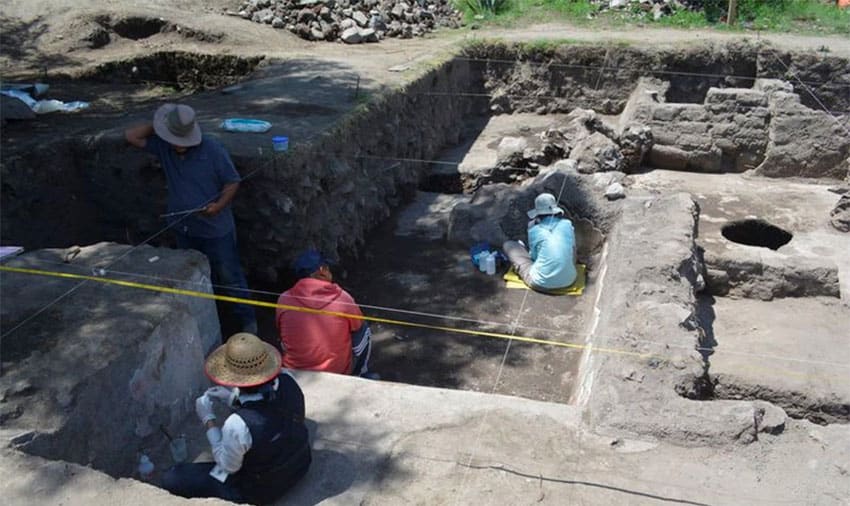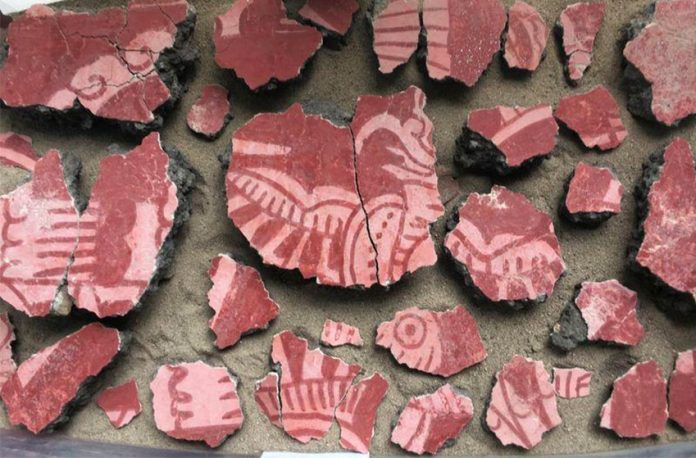Fragments of murals recently found on the outskirts of the pre-Hispanic city of Teotihuacán provide further evidence that commoners there lived more privileged lives than their counterparts in other ancient cities.
A team of archaeologists led by David Carballo of Boston University uncovered murals decorated with flowers and birds that appear to be singing in Teotihuacán’s Tlajinga district, located about three kilometers south of the city’s core.
“We’re now finding that life on the periphery was pretty good,” Carballo told the news agency Reuters, adding that the discovery of the murals came as a complete surprise.
The archaeologist and his team have also found jade, a finely-carved stone mask and shells from both the Pacific and Gulf coasts in the area.
In addition, they have excavated an ancient obsidian workshop where some 200,000 blades were likely produced.
The findings have led the archaeologists to believe that Teotihuacán, which flourished from about 100 B.C. to 550 A.D., had a successful craft-based economy in which artisans including lapidaries, potters, garment makers and obsidian workers plied their trades.

They believe that the bustling economy allowed the commoners of Teotihuacán, located about 50 kilometers northeast of Mexico City, to live more comfortable lives than low-class residents of cities in the Mayan world or ancient Rome and Egypt, where poverty and enslavement were common.
Ancient housing on Teotihuacan’s outskirts supports the hypothesis.
In the district of La Ventanilla, there are multi-family apartment compounds made out of stone that have white-lime plaster floors, built-in drainage systems, open-air courtyards and murals, Reuters said.
Ruben Carrera, one of the first archaeologists to excavate the district, said that the housing is indicative of lower inequality in Teotihuacán compared to other ancient cities.
“It wasn’t as pronounced as, say, Rome or other places where there was a dominant group and a dominated group,” he told Reuters.
Carrera also noted that no evidence of slavery has ever been uncovered in Teotihuacán, whose two large pyramids now attract millions of tourists a year.
Michael Smith, an Arizona State University archaeologist who heads up a research lab at Teotihuacán, told Reuters that a wealth calculation based on house sizes showed that inequality in Teotihuacán was low for a pre-industrial settlement.
The average home in the ancient city was about 200 square meters, or the size of a tennis court, whereas Mexica dwellings typically only measured one-eighth that size, he said.
Another piece of evidence that indicates that Teotihuacán residents lived lives not all that different from the city’s elite is that they grew to almost the same height.
Data collected by Carballo shows that males buried in apartment compounds on the outskirts of the city were less that one centimeter shorter on average than elites laid to rest in graves near the Moon Pyramid in the center of Teotihuacán.
In contrast, commoners in Mycenae, Greece, were more than six centimeters shorter than royals, data shows, and nine centimeters shorter in ancient Egypt.
Source: Reuters (en)
